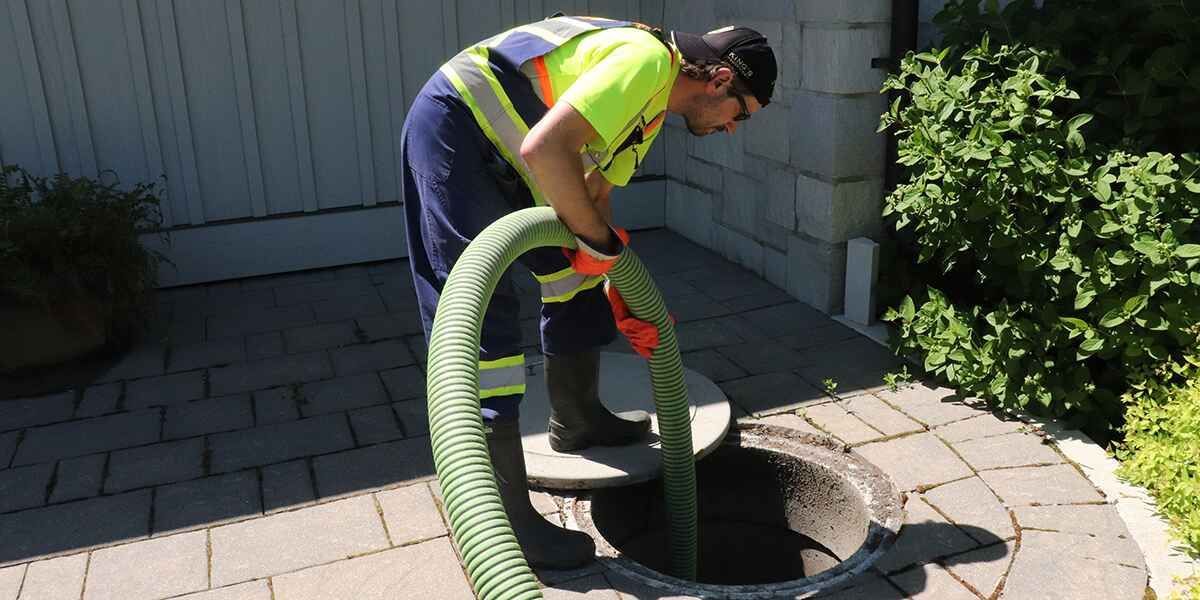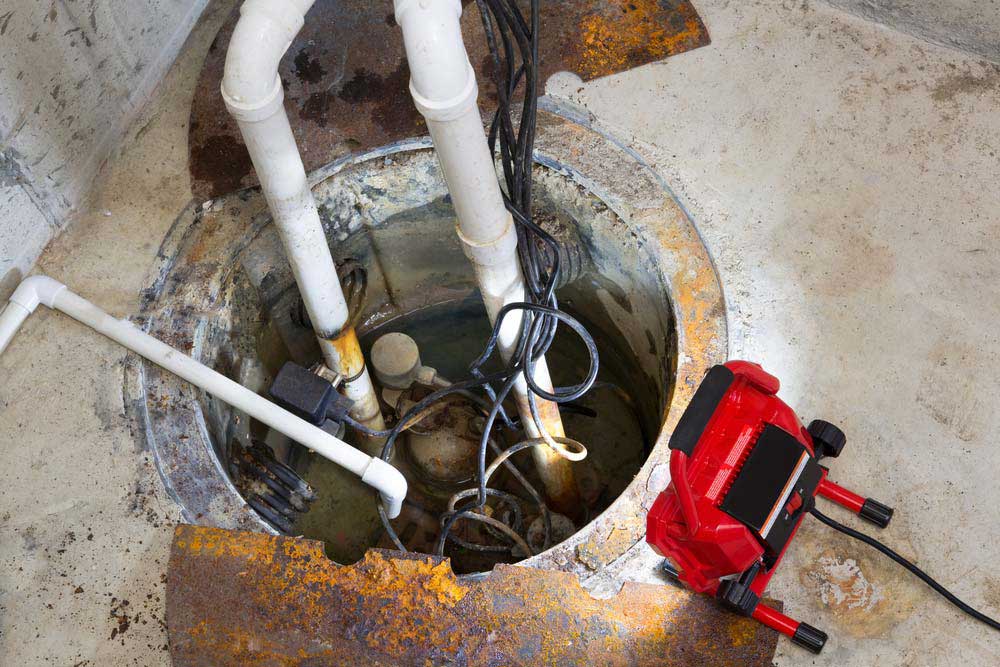Everybody may have their own unique thinking about Keep Your Sump Pump Clean, It'll Keep You Dry.

Sump pumps are essential parts in several homes, particularly in areas susceptible to flooding or too much dampness. They assist protect against water damages by effectively getting rid of excess water from cellars or crawl spaces. Nevertheless, like any other device, sump pumps need routine upkeep to guarantee they work effectively when required the most. Cleansing your sump pump is an important part of its upkeep, and understanding exactly how to do it properly can save you from costly fixings and possible catastrophes.
Intro
Preserving a tidy sump pump is important for its correct functioning and durability. Overlooking this important job can cause obstructions, breakdowns, and inevitably, water damages to your residential or commercial property. Therefore, discovering how to clean up a sump pump is vital for home owners who rely upon these gadgets to keep their basements dry and secured.
Recognizing the Sump Pump
Before diving into the cleansing procedure, it's important to have a fundamental understanding of just how a sump pump works. Commonly installed in a pit or container below the cellar floor, a sump pump contains several vital components, including a pump, a float button, and a discharge pipe. When water gathers in the pit, the float button turns on the pump, which after that pumps the water out via the discharge pipe, away from the structure's structure.
Signs of a Dirty Sump Pump
Knowing when your sump pump needs cleaning is essential for protecting against potential breakdowns. Some usual indicators that suggest a filthy sump pump include weird sounds during operation, lowered water flow, and noticeable debris in the pit. If you discover any one of these signs and symptoms, it's essential to cleanse your sump pump without delay to stay clear of any type of more problems.
Preparing for Cleaning
Prior to you start cleansing your sump pump, it's important to take some security preventative measures. Beginning by turning off the power to the pump to stay clear of any kind of electrical accidents. Furthermore, put on appropriate safety equipment, such as handwear covers and safety glasses, to shield on your own from dust, debris, and prospective microorganisms.
Step-by-step Guide to Cleaning a Sump Pump
Shutting down the Power
Begin by separating the power supply to the sump pump to stop any type of mishaps while cleaning.
Getting Rid Of Particles and Dust
Use a container or a scoop to get rid of any type of noticeable debris, dirt, or debris from the sump pit. Dispose of the debris effectively to prevent it from blocking the pump or the discharge pipeline.
Cleaning the Pump and Float Change
Once the pit is clear of debris, carefully eliminate the pump from the pit. Evaluate the pump and the float button for any signs of damage or wear. Utilize a soft brush or fabric to cleanse the surfaces and eliminate any kind of accumulated grime.
Purging the System
After cleansing the pump and float button, flush the sump pit with clean water to remove any kind of continuing to be dust or sediment. This will help make sure that the pump operates efficiently and effectively.
Checking for Proper Performance
Prior to reinstalling the pump, execute a quick examination to make sure that the float switch turns on the pump correctly. Pour some water right into the sump pit and observe the pump's operation. If whatever is operating properly, you can rebuild the pump and reconnect the power supply.
Upkeep Tips to Maintain Your Sump Pump Clean
Along with routine cleaning, there are a number of maintenance pointers you can comply with to maintain your sump pump in optimum problem:
- Normal Evaluation: Inspect your sump pump frequently for any kind of signs of wear, damages, or obstructions.
- Keeping the Surrounding Area Clean: Make Sure that the area around the sump pit is devoid of particles, dirt, and blockages.
- Testing the Pump Regularly: Evaluate your sump pump periodically by putting water right into the pit and observing its operation. This will certainly help you determine any possible issues prior to they rise.
Conclusion
Cleansing your sump pump is a critical aspect of its maintenance and makes certain that it runs efficiently when you require it the most. By complying with the actions laid out in this overview and including routine maintenance into your routine, you can extend the lifespan of your sump pump and safeguard your home from water damage.
6 STEPS ON HOW TO CLEAN A SUMP PUMP PROPERLY
UNDERSTANDING SUMP PUMPS
Your sump pump plays a crucial role in protecting your home by managing and removing excess water. It primarily functions as a “shield”, guarding your basement against the damaging effects of water accumulation. The pump is housed in a sump pit in the lowest part of your basement, and its job is to pump out any water that collects there.
During heavy rainfalls or when snow melts rapidly, water can infiltrate your basement, posing potential risks like flooding, structural damage, and harmful mold growth. Here, the sump pump springs into action, pumping out the intruding water and directing it away from your home.
SAFETY FIRST
Before cleaning, remember to prioritize safety. Disconnect the sump pump from the power source to prevent any accidental electric shocks. Also, wear sturdy gloves to protect your hands from any sharp or dirty components within the pump.
REMOVE THE SUMP PUMP
After ensuring your safety, the next step is to remove the sump pump from its pit. Doing this might require careful maneuvering as you don’t want to damage any pump components. Once removed, clean the sump pit to remove any accumulated debris or sludge.
INSPECT THE PUMP
Inspect the pump for any visible signs of wear or damage. Check the power cord, float switch, and impeller housing. If any components look worn out or damaged, consider replacing them to ensure optimal performance.
CLEAN THE PUMP
Thoroughly clean the pump with warm, soapy water. Make sure to rid it of any dirt, gravel, or other debris that might impede its performance. You can use a toothbrush to clean the small, hard-to-reach parts of the pump.
REINSTALL THE SUMP PUMP
- Reinstall the pump into the sump pit
- Make sure it’s positioned correctly to remove the water effectively
- Once it’s back in place, reconnect it to the power source
TEST THE PUMP
Finally, pour some water into the pit to ensure the pump works correctly. It should start automatically and begin pumping out the water; if it doesn’t, check the power source and the positioning of the pump.
Remember, while cleaning your sump pump is an essential part of home maintenance, hiring a professional plumber for a thorough inspection and cleaning at least once a year is also important. This will ensure that your pump is in optimal condition, ready to protect your home from potential water damage.
BEST PRACTICES FOR CLEANING SUMP PUMP DISCHARGE PIPES
- Regular Inspection: Regularly inspect your discharge pipes, especially during heavy rainfall or snowmelt periods. Look for any signs of blockage or damage. Early detection of problems can prevent serious issues down the line.
- Periodic Cleaning: Over time, sediment and debris can accumulate in the discharge pipes, impeding the flow of water. Regular cleaning helps keep the pipes clear and functioning efficiently. You can use a high-pressure water jet to effectively clean the pipes.
- Insulation During Winter: In colder climates, discharge pipes can freeze, blocking the outflow of water. Protect your discharge pipes from freezing temperatures by insulating them with foam pipe insulation. This will ensure the sump pump can continue to discharge water even in freezing conditions.
- Proper Positioning: The discharge pipe should be positioned to direct water away from your home’s foundation. Improper positioning can lead to water seeping back into the basement. Ensure the pipe is long enough and angled correctly.
- Installation of a Check Valve: A check valve prevents water from flowing back into your sump pit after the pump has pushed it out. Installing a check valve helps maintain the efficiency of your sump pump and reduces the risk of flooding.
- Minimize Pipe Turns: Every curve or turn in the discharge pipe can decrease the efficiency of water flow. By minimizing turns and bends in your discharge pipe, you can increase the efficiency of your sump pump.
https://www.fullspeedplumbing.com/how-to-clean-a-sump-pump-properly9999/

Hopefully you enjoyed reading our topic about How to Care for Your Sump Pump. Thanks a lot for finding the time to browse our short article. If you appreciated our blog entry kindly remember to share it. I truly appreciate reading our article about How to Care for Your Sump Pump.
Article
Comments on “Simple Methods for Maintaining a Sump Pump”